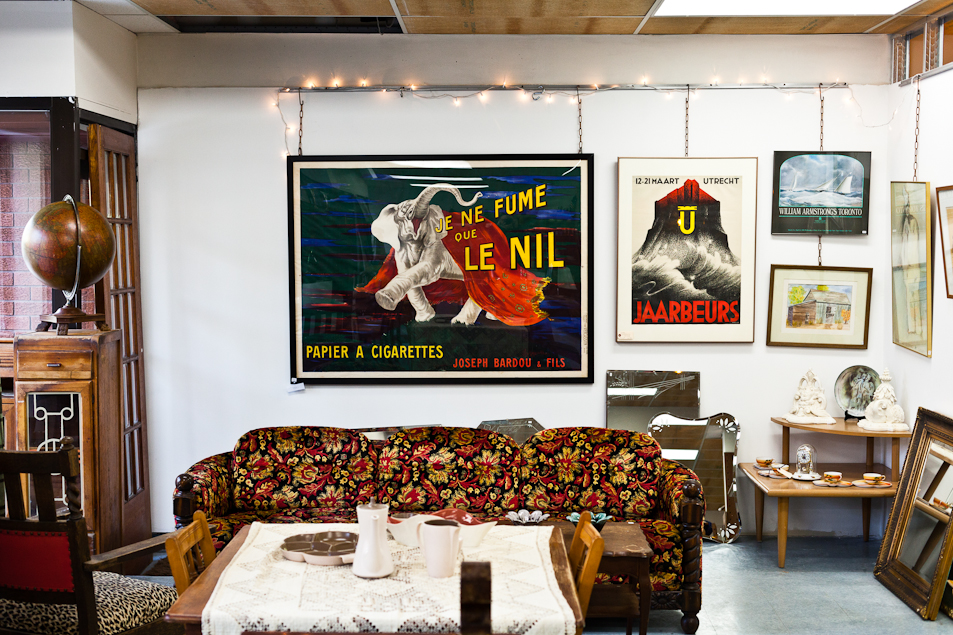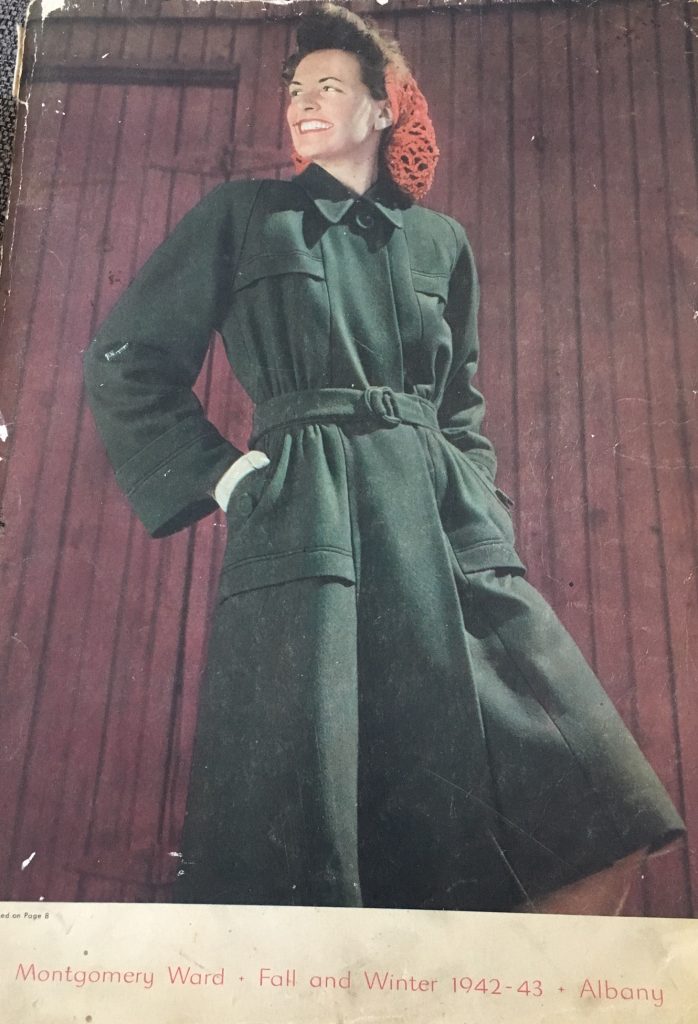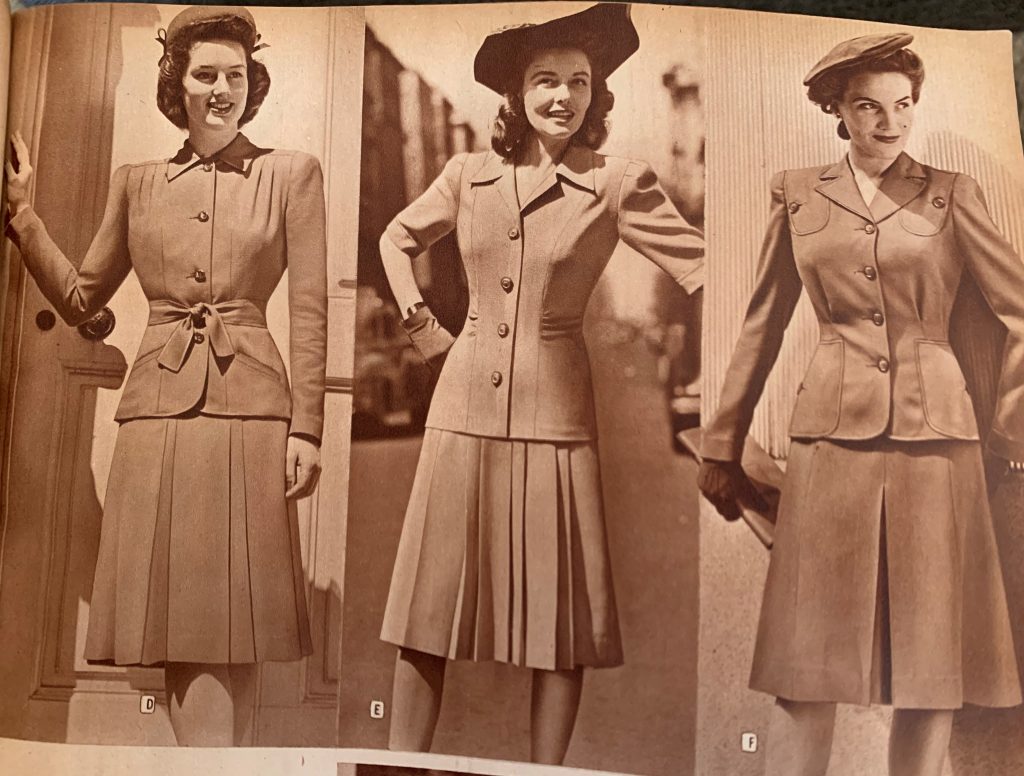It’s that time of year again and just in case you need a reminder of what that is I’m talking about it’s…..CHRISTMAS!! I love Christmas always have and always will and I’m just counting the seconds till I can put up my tree and holiday decor in my husbands and I’s tiny apartment built for 1 🙂 In the mean time while I wait for Dec 1st I’m busy thinking about my Christmas shopping that has to be done and holiday outfits to be worn (or purchased). So where does a vintage lover like me shop in the big city of Toronto for Vintage themed gifts or a Vintage Holiday Outfit? Here are some of my fav picks.
West End Shopping
The store is located in the heart of Roncesvalles (121 Ronscevalles) and is teeming with furnishings large and small, old books, vintage jewellery, 1950’s dishes, beautiful vintage clothing (1950s-80s) and shoes plus much much more. I have purchased many items for myself and for friends from here and the prices are really good for being in a popular shopping part of town.
They accept all forms of currency, hours are posted on their website.
——————————-
Frou Frou Vintage: (1616 Queen St. West)
Mostly Clothing and accessories, this store has some pretty sweet mid-century clothing finds (not tons but they are there) and the owner is very knowledgeable in vintage clothing and the prices are pretty fair. Cash only so be prepared and hours are wonky so call ahead.
———————————–
Stella Luna: (1627 Queen St. West)
Another store with mostly clothing and accessories but the selection is good and the owner does carry some 1950’s and 60’s dresses/suits/skirts/hats etc. In the summer I purchased a cute early 60’s summer dress that I wear all the time and the price was $30 (taxes are included in the price).
What I love about this store, is that the owner has taken the time to colour coordinate all the racks. Looking for a red holiday dress…hit up the red rack and if it’s not there you are in and out in 5 mins. Cash only store, so come prepared and I believe they are open 7 days a week but always call ahead to be sure.
————————————–
Cabaret Vintage: High Fashion Vintage Boutique. UPDATE: Now only online
(Photo credit: Blog TO)
To start…Yes the store has pieces that are pricey BUT the clothes and accessories (men and women) are beautiful and in mint condition so you are getting your money’s worth. Also not everything is out of budget so don’t be afraid to browse thru the racks and just take in the beauty that is Vintage because you never know what you will find. Note: when they do sales they really do a sale so keep your eyes peeled for that.
The staff at Cabaret are FANTASTIC! I seriously can’t say that enough! Every time I walk into that store I am made to feel like I am family and I love it and that is why encourage friends and family to visit the store. The store accepts all form of currency and is open 7 days a week.
————————–
Kensington Market
Flashback 1 & 2 (33 & 25 Kensington Ave)
Flashback Vintage 1 & 2 are both located down the street from each other in the main vintage clothing area of Kensington Market. Both stores have 1940-1960’s men and women clothing and accessories and I tend to find the selection pretty good BUT…as much as I love shopping in these stores (and my closet has several dresses from them) you need to shop there with caution because some of the clothes on the racks might be a bit worn (they are old!). Just be aware and check out the outfit from top to bottom to ensure you are okay with it before purchasing and you will be fine. All that aside though, I have been very happy with everything I have purchased from their stores (see dress below).
Store accepts all forms of currency and I believe are open 7 days a week.

—————————————-
Courage My Love (14 Kensington Ave)
Cashmere Sweaters for $30. Vintage Lingerie for that special lady in your life , there are lots of lovely pieces to chose from. Love Bakelite Jewellery? They have a pretty impressive collection that will knock that special someones bobby socks right off when they open it for Christmas. In regards to clothing I also find that they tend to carry a nice selection of skirts from the 50’s and 60’s for really good prices. They accept all forms of currency and I believe are also open 7 days a week.
Lastly I will leave you with…
————————————-
East End
Gadabaout (1300 Queen St. East)
“Gadabout is an amazing repository for all that is vintage. Gadabout houses an extensive collection of vintage clothing, accessories, and fabrics including household textiles, blankets and rugs. In addition, the store carries ephemera, nostalgia and curios. Our Manly Man Corner is famous for its variety and oddities.
Clothing dates from the late 1800s through the 1970s (some 80s available but it’s not vintage yet) and is in impeccable condition. (We don’t carry any t-shirts or denim.) The store is a delight to the eye, a lift for the spirits and lots of fun. Visit often, new arrivals weekly.” (Gadabout “About Us”)
(Photo from Gadabout Website)
I LOVE this store and I left it till the last because it really is a store that you need a few hours to devout of your time to be able to see everything that is in every nook and cranny in the store (as you can see from the picture and that is only the first floor!). They truly have everything imaginable and you are guaranteed to find something for yourself or a loved one, whatever your taste is. Last time I was in I was trying on Bathing suits from the 1940’s and they were in the best condition! sigh…why did that blue bathing suit not fit me right?? 🙁 lol
They accept all forms of currency and store hours vary so visit their website or call before visiting.
**********
So there you have it, my favorite picks for some Toronto shopping for your Holiday outfit or for gifts for friends and family (or yourself..go on I won’t tell) and stay tuned for a post on “East end Toronto Vintage Shopping” coming soon.
So ladies and gents, where do you like to Vintage Shop in Toronto or maybe in your hometown for the holidays?
Liz











